With the release Friday of the state investor finance data for April, it is an opportune time to once again plot total finance commitments (excluding refinancings) as measured by the ABS against dwelling values as measured by Core-Logic RP Data.
First, below is the national picture, which shows finance approvals typically leading price growth:
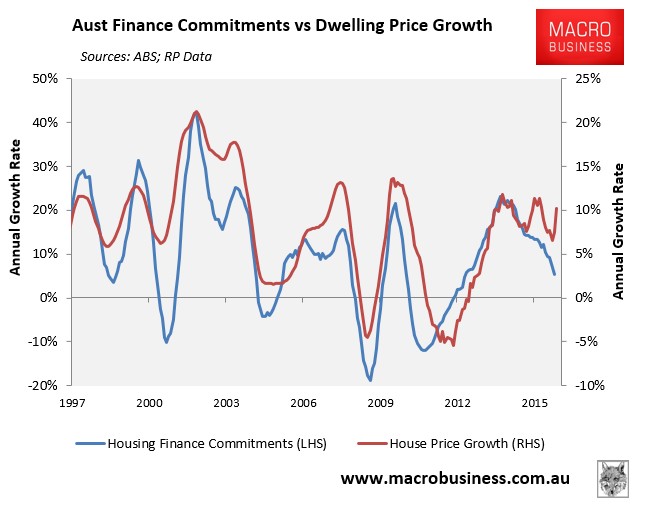
Strangely, over the past year, dwelling prices have held firm despite a sharp fall in the value of housing finance commitments.
Across the five major capitals, there has also been a strong correlation between finance commitments and dwelling price growth; albeit with different lead/lag times:
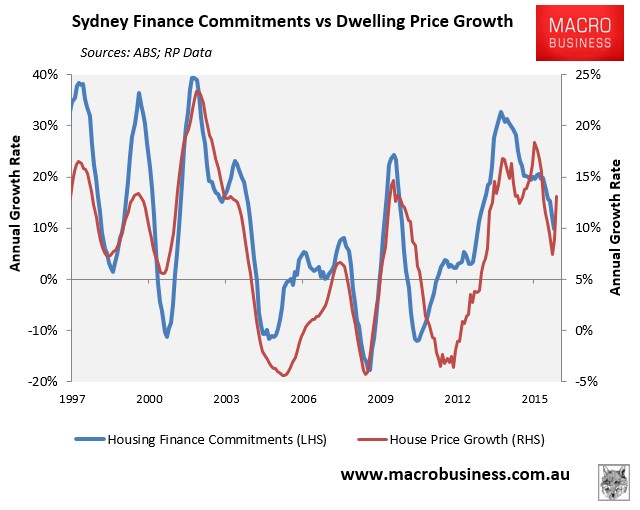
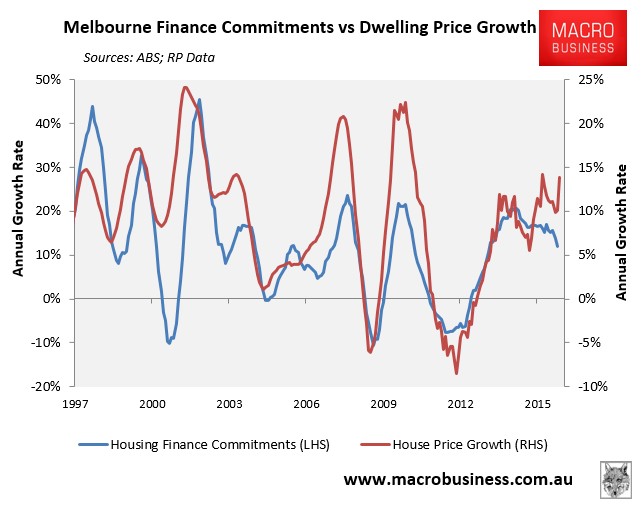
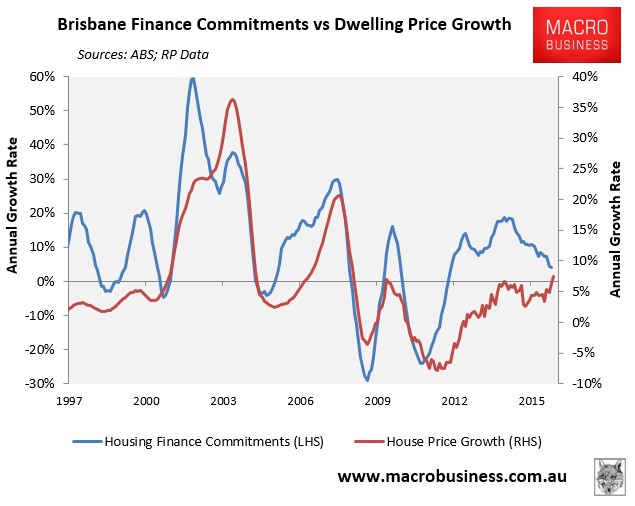
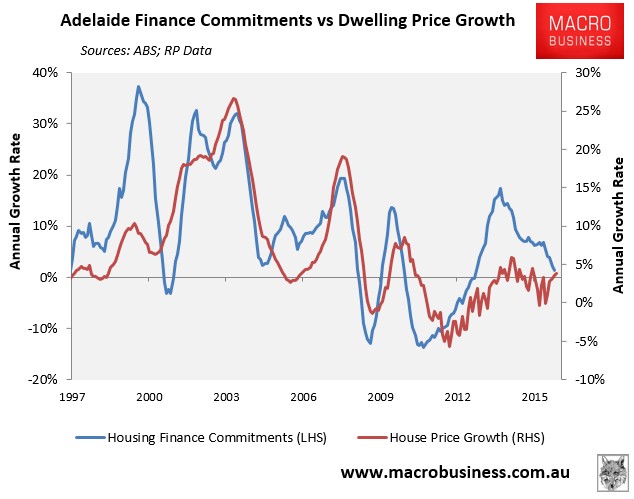
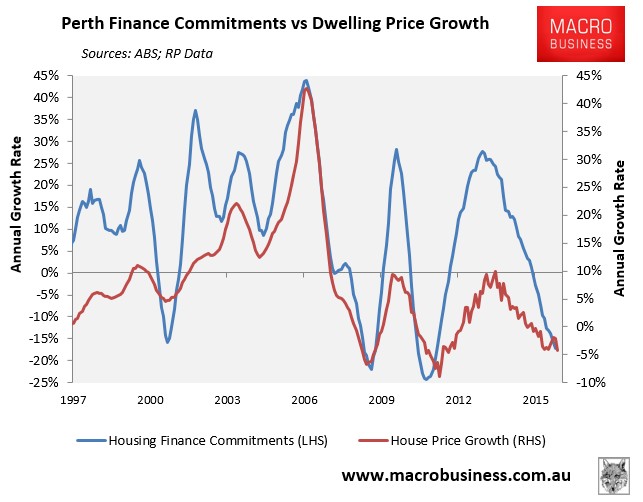
Logically, with housing finance growth past its peak in all major markets, it should also mean that price growth is also past its peak in each respective market.
However, prices have ‘bucked-the-trend’ in recent months across each major market except Perth, strengthening despite the weakening housing finance commitments. Melbourne, Sydney and Brisbane, in particular, are going ‘against the grain’.
As noted last time, there are several possible explanations for the divergence of housing finance commitments and dwelling price growth.
First, transaction volumes may have fallen even more sharply than the value of finance commitments (i.e. fewer loans chasing even fewer properties), which could explain the recent rise in the RP Data daily index. However, this explanation is complicated by the fact that the average loan size has also fallen sharply, which would usually correlate with falling dwelling values:
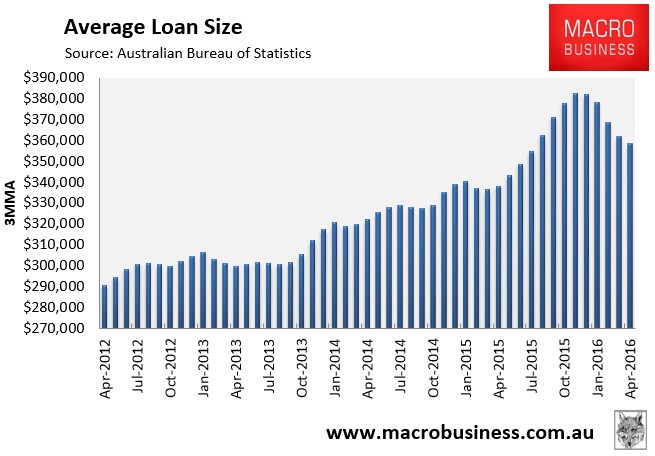
Second is the potential for cash buyers, such as buyers from overseas, whom are not captured in the housing finance statistics. We know that foreign buyers have been particularly active in Melbourne and Sydney and more recently Brisbane and Perth, and that this demand could support prices even in the face of falling domestic demand:
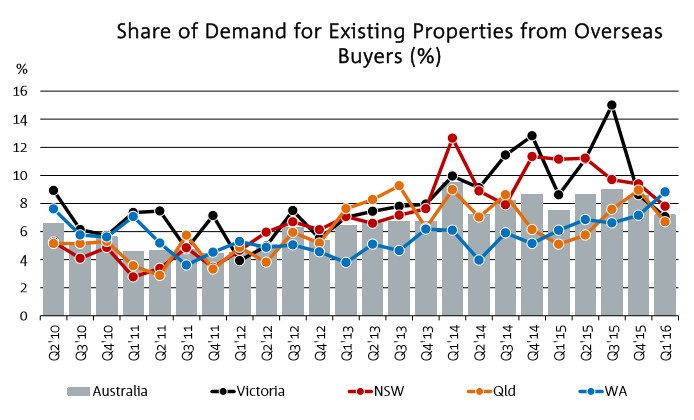
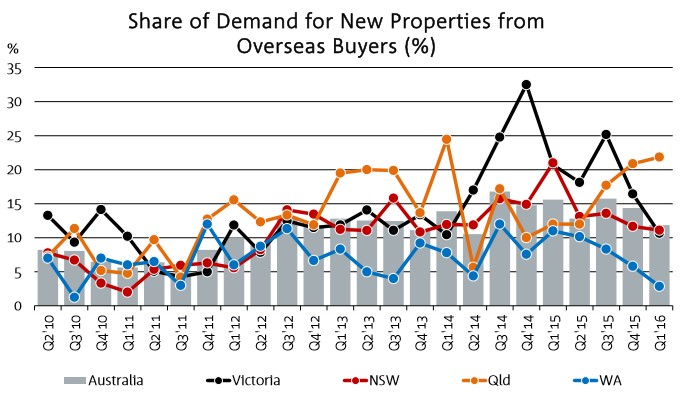
Third, the RP Data index could be displaying significant ‘numberwang’ and may very well reverse out recent gains in coming months. Really, we need to await the results of the other indices – Residex, APM (Domain) and the ABS – before concluding that house prices are rising strongly once more.
The total value of housing finance (excluding refinancings) is still the best single indicator of price growth that I can think of. And the fact that it is pointing down for each major market should eventually mean falling price growth.

